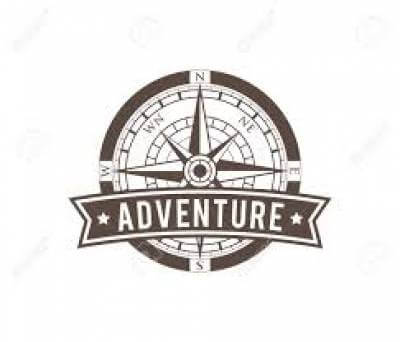GOKYO AND EVEREST BASE CAMP TREK 12 DAYS
The Gokyo and Everest Base Camp Trek 12 Days is one of the most thrilling trekking routes in Nepal, offering an unforgettable journey through the Himalayas. This trek combines the majestic beauty of the Everest region with the serene Gokyo Lakes, giving trekkers the opportunity to witness some of the world's highest peaks, including Mount Everest, Makalu, and Cho Oyu.
The trek begins with a scenic flight to Lukla, the gateway to the Everest region. From there, you'll hike through lush forests, crossing suspension bridges, and passing through traditional Sherpa villages like Namche Bazaar, the vibrant heart of the Khumbu region. Along the way, you'll experience the warm hospitality of the Sherpa people while acclimatizing to the increasing altitude.
One of the highlights of the trek is the visit to the Gokyo Lakes, a series of stunning glacial lakes nestled beneath towering mountains. The trek to Gokyo Ri, a viewpoint at 5,483 meters, offers some of the best panoramic views of the Everest region, including the towering peaks of Everest, Lhotse, and Makalu.
The trek continues as you cross the Cho La Pass, an exciting challenge that leads to the iconic Everest Base Camp. Standing at the base of the world's highest mountain is a moment of pure awe and accomplishment. From there, you'll hike to Kala Patthar, one of the best viewpoints for Everest, where you'll be treated to an incredible sunrise over the majestic mountain range.
The return journey retraces your steps, offering one last opportunity to appreciate the spectacular scenery before flying back to Kathmandu. This 12-day trek is a perfect blend of adventure, beauty, and culture, ideal for those seeking an epic Himalayan experience.
ITINERARY
Day 1 : Fly to Lukla (2,804 m / 9,196 ft) and Trek to Phakding (2,610 m / 8,561 ft) Duration: 4-5 hours.
The adventure begins with a thrilling flight from Kathmandu to Lukla, where you’ll land at one of the world’s most famous airports. After landing, you'll start your trek towards Phakding, a picturesque village along the Dudh Kosi River. The journey today is relatively short but beautiful, passing through small Sherpa villages and lush forests. The trek takes about 4-5 hours and helps you adjust to the first stages of the altitude. Upon arrival, you can rest and enjoy your first night in the mountain region.
Day 2 : Trek to Namche Bazaar (3,441 m / 11,286 ft) Duration: 7-8 hours.
On Day 2, your trek leads you further up the Khumbu valley to Namche Bazaar, a vibrant Sherpa town and the main hub of the Everest region. You will cross several suspension bridges over the Dudh Kosi River and gradually ascend through dense forests of rhododendron, pine, and fir trees. As you reach Namche after 7-8 hours of trekking, the stunning views of the Himalayas, including Mount Everest and Lhotse, begin to unfold. Namche Bazaar will be your base for acclimatization the following day.
Day 3 : Acclimatization Day at Namche Bazaar (3,441 m / 11,286 ft)
Acclimatization is crucial at this stage of the trek to prevent altitude sickness. You’ll spend a day exploring Namche Bazaar, which is also a great opportunity to experience Sherpa culture. For those feeling up to it, there are several optional hikes, such as visiting Everest View Hotel for a panoramic view of Everest, Ama Dablam, and other Himalayan peaks. You may also explore the local market, Buddhist monasteries, or the Sherpa Museum to learn about the region’s history and culture. It’s a day to rest and allow your body to adjust to the altitude.
Day 4 : Trek to Dole (4,200 m / 13,780 ft) Duration: 5-6 hours.
Today, you continue your trek towards Dole, passing through lush forests and high-altitude meadows. The trail ascends gradually, giving you spectacular views of the surrounding mountains and valleys. The walk is approximately 5-6 hours, with a moderate climb through Lumela, where you may get your first real taste of the mountainous landscape. Dole offers a peaceful atmosphere, perfect for an overnight rest before you continue the climb towards Gokyo.
Day 5 : Trek to Gokyo (4,790 m / 15,715 ft) Duration: 5-6 hours.
The trek to Gokyo is a beautiful 5-6 hour hike, where you’ll cross several scenic villages and be greeted with views of the majestic mountains as you climb. The trail leads through rocky paths and alpine meadows, with the stunning Gokyo Lakes becoming more visible as you approach. Gokyo is situated at the foot of towering peaks like Cho Oyu and offers a tranquil environment perfect for soaking in the Himalayan beauty. Upon arrival, you can enjoy the lakes and the breathtaking scenery.
Day 6 : Trek to Gokyo Ri (5,483 m / 17,986 ft) and Back to Gokyo via Thangnak (4,500 m / 14,764 ft) Duration: 6-7 hours.
This day is a highlight of the trek. Early in the morning, you’ll ascend to Gokyo Ri, a viewpoint at 5,483 meters (17,986 feet). From the summit, you’ll enjoy some of the best panoramic views of the region, including Mount Everest, Makalu, Lhotse, Cho Oyu, and the surrounding Gokyo Lakes. After soaking in the breathtaking vistas, you’ll return to Gokyo and then continue to Thangnak (4,500 meters / 14,764 feet). This round trip takes 6-7 hours and provides an unforgettable hiking experience with stunning views of the lakes and surrounding peaks.
Day 7 : Cross Chola Pass (5,368 m / 17,611 ft) and Trek to Dzongla (4,830 m / 15,849 ft) Duration: 6-9 hours.
Today, you will face a challenging but rewarding section of the trek: crossing the Chola Pass at 5,368 meters (17,611 feet). The climb to the pass is strenuous, but it rewards you with exceptional views of the surrounding peaks. After reaching the top, you’ll descend to Dzongla (4,830 meters / 15,849 feet), a small settlement where you can rest and recover after a long day. This section of the trek takes approximately 6-9 hours and is one of the most demanding parts of the journey.
Day 8 : Trek to Everest Base Camp (5,365 m / 17,598 ft) and Back to Gorak Shep (5,180 m / 17,021 ft) Duration: 9-10 hours.
Today is the day you’ll reach the iconic Everest Base Camp! Starting early, you’ll trek towards Gorak Shep, which serves as the last stop before the base camp. From Gorak Shep, you’ll make your way to Everest Base Camp itself at 5,365 meters (17,598 feet), where you’ll have the chance to stand at the foot of the world’s highest mountain. After celebrating the achievement, you’ll return to Gorak Shep to rest for the night. This long day takes about 9-10 hours, but it’s worth every step for the once-in-a-lifetime experience.
Day 9 : Hike Up to Kala Patthar (5,555 m / 18,192 ft) and Trek Down to Pheriche (4,300 m / 14,107 ft) Duration: 6-7 hours.
The day starts early with a hike up to Kala Patthar (5,555 meters / 18,192 feet), one of the best viewpoints for Mount Everest. The summit offers an incredible panoramic view of Everest and the surrounding peaks, especially at sunrise when the light hits the mountains. After spending some time taking in the awe-inspiring views, you’ll descend back to Gorak Shep and continue your trek downhill to Pheriche (4,300 meters / 14,107 feet), a small village that offers much-needed rest after the high-altitude trekking.
Day 10 : Trek to Namche Bazaar (3,441 m / 11,286 ft) Duration: 6-7 hours.
After several days at high altitudes, it’s time to descend back towards Namche Bazaar. The trail takes you through Pangboche, Tengboche, and Khumjung, with views of lush forests and the majestic peaks of the Himalayas. The trek down is approximately 6-7 hours, and the descent provides a refreshing change from the previous challenging days at higher altitudes. In Namche, you can relax, have a warm meal, and enjoy the vibrant atmosphere of the town.
Day 11 : Trek to Lukla (2,804 m / 9,196 ft) Duration: 6-7 hours.
On your final trekking day, you’ll make the 6-7 hour descent back to Lukla. The trail retraces your steps down the valley, passing through villages, forests, and suspension bridges. Upon arrival in Lukla, you’ll have the chance to celebrate the completion of your trek and reflect on your incredible journey through the Everest region.
Day 12 : Morning Flight from Lukla to Kathmandu (1,400 m / 4,593 ft) Duration: 30-minute flight.
On the final day, you’ll board a morning flight back to Kathmandu from Lukla. The flight provides one last glimpse of the Himalayas before returning to the bustling capital. Once in Kathmandu, you’ll have the afternoon free to rest, explore, or shop for souvenirs before your departure. The flight from Lukla to Kathmandu takes about 30 minutes and marks the conclusion of your incredible Gokyo and Everest Base Camp Trek.
SERVICES
What's Included in Your Trekking Package:
- Airport Transfers: Domestic airport pick-up and drop-off by private car/jeep.
- Meals: Three meals a day (breakfast, lunch, and dinner) throughout the trek.
- Fresh Fruit: Fresh fruit provided every evening after dinner.
- Accommodation: Stay in trekking lodges (Tea Houses) during the trek.
- Permits: All necessary paperwork including Sagarmatha National Park Entry Permit and Khumbu Pasang Lhamu Rural Municipality fees.
- Flights: Kathmandu-Lukla-Kathmandu (Ramechhap-Lukla-Ramechhap) flights with private airport transfer and domestic airport taxes.
- Guides and Staff:
- A highly experienced, English-speaking, government-licensed guide, covering their salary, food, drinks, accommodation, transport, and insurance.
- Strong, helpful Sherpa porters (one porter per two trekkers), with their salary, food, accommodation, and insurance, along with proper safety and walking equipment.
- Assistant guide for groups of 8 or more.
- Medical Support: Comprehensive medical supplies (first aid kit) and arrangements for emergency helicopter services (paid by your travel insurance).
- Equipment: Use of a sleeping bag, down jacket, duffel bag, and walking poles (to be returned at the end of the trek).
- T-Shirt: A Sherpa Expedition and Trekking T-shirt.
- Government Taxes & Official Fees: All applicable government taxes and official expenses.
- Trip Achievement Certificate: Certificate awarded upon successful completion of the trek.
- Health Monitoring: Oxygen meter to monitor your pulse, oxygen saturation, and heart rate twice daily, ensuring your health and well-being during the trek.
What's Not Included in Your Trekking Package:
- Meals in Kathmandu: Lunch and dinner while you are in Kathmandu.
- Hotel Accommodation in Kathmandu: Costs for hotel stay in Kathmandu before and after the trek.
- Nepal Entry Visa: The visa fee for Nepal, which is easy to obtain on arrival at Tribhuvan International Airport in Kathmandu:
- $30 USD for a 15-day visa
- $50 USD for a 30-day visa
- $125 USD for a 90-day visa
- Personal Travel and Medical Insurance: Travel and medical insurance for the duration of your trip (highly recommended for coverage).
- International Airfare: Your international flights to and from Nepal.
- Personal Expenses: Any personal purchases such as souvenirs, snacks, or items not specified in the package.
- Beverages: Alcoholic and non-alcoholic drinks, including soup, tea, coffee, hot chocolate, cocoa, mineral water, and any extra food or drinks you choose to purchase along the trek and in the tea houses.
- Desserts and Sweets: Items like chocolate, cake, pie, pudding, and other sweet treats.
- Hot Showers and Battery Charging: Charges for hot showers and battery charging at the tea houses along the trek.
- Tips: Tipping for the guide, porter, and driver (tipping is expected in Nepal).
- Excess Baggage: Any baggage weight exceeding the 10 kg limit for the Lukla flight.
Note: If you return early from the trek due to sickness or other issues, the fees for flights, hotels, mountain rooms, food, etc., are nonrefundable. You will need to bear any additional expenses for hotel stays, food, etc., in Kathmandu on your own.
EQUIPMENTS
The following information will give you some idea about what you need to bring for the trek. It is important you do not forget the essential items, as this will determine your comfort and safety on the trek. Equally important is that you do not burden yourself with unnecessary equipment on the trek.
- Sleeping Bag (Sherpa Teams will provide but need to return after completing the trip)
- Duffel Bag (Sherpa Teams will provide but need to return after completing the trip)
- Fleece jacket or pullover
- Waterproof windbreaker or windcheater
- Thermal underclothes
- Rain poncho
- Down jacket (Sherpa Teams will provide but need to return after completing the trip)
- Fleece or wool trousers
- Sun hat or scarf
- Trekking pants (two pairs)
- Mittens or woolen gloves
- Hiking socks (several pairs)
- Moisture-wicking shirts, including t-shirts
- Trekking shoes or boots with spare laces
- Flip-flops or sandals for relaxing in the evenings
- Underwear (several pairs)
- Swimsuit or swimming costume
- Sunglasses
- Headlamp or flashlight/torch
- Sleeping bag (Sherpa Teams can provide this for you)
- Trekking poles (if desired)
- Hiking backpack with a capacity of at least 40 liters
- Small lock for your backpack
- Reusable water bottles (at least two liters)
- Water purification tablets or filtration device
- Wash towel
- Basic first aid kit
Toiletries (tissues, toilet paper, moisturizer, lip balm, sunscreen, sanitary pads, hand sanitizer, nail clippers, a small mirror, toothbrush, toothpaste, glasses, contacts, etc.)
GOOD TO KNOW
Best Time to Trek
The best time to embark on the Gokyo and Everest Base Camp Trek is during the pre-monsoon (spring) months of March to May and post-monsoon (autumn) months of September to November. These seasons offer clear skies, pleasant temperatures, and stable weather, making them ideal for trekking. Spring offers the added bonus of blooming rhododendrons and lush greenery, while autumn presents crisp mountain views and the perfect trekking conditions. Avoid the monsoon season (June to August) as heavy rainfall can make the trails slippery and conditions more challenging.
Acclimatization and Altitude Considerations
This trek takes you to high altitudes, reaching Everest Base Camp at 5,365 meters and Gokyo Ri at 5,483 meters. To help reduce the risks of altitude sickness, the trek includes planned acclimatization days, such as in Namche Bazaar and Dole. These rest days allow your body to adjust gradually to the thinning air. It's essential to listen to your body and stay hydrated during the trek. Symptoms of altitude sickness, including dizziness, headaches, or shortness of breath, should be taken seriously, and descending to a lower altitude is necessary if they persist.
Physical Fitness Requirements
The Gokyo and Everest Base Camp Trek is a moderate to challenging trek, requiring good physical fitness and stamina. While the trek doesn’t require technical mountaineering skills, it involves several days of hiking at high altitudes with steep ascents and rugged terrain. Cardiovascular fitness is key for managing the long walking hours, and training with cardio exercises like hiking, running, or cycling is highly recommended. Strengthening leg muscles and preparing for long days of trekking will enhance your experience and ability to manage the demands of the trail.
Packing Essentials
Packing the right gear is crucial for a safe and comfortable trek. Essential items include warm clothing like thermal layers, a good-quality down jacket, and trekking boots. You’ll also need a daypack for carrying water, snacks, and essentials, along with a main duffel bag for your porters to carry. Don’t forget your sunglasses, sunblock, and lip balm, as the sun at higher altitudes can be intense. Additionally, carrying a first-aid kit, water purification system, and camera is important for your health and capturing the unforgettable views. A power bank for charging devices is also advisable.
Cultural Experience
The Gokyo and Everest Base Camp Trek offers more than just a physical adventure; it also provides an immersive cultural experience. You will pass through Sherpa villages such as Namche Bazaar, Dole, and Gokyo, where you can learn about the traditions, customs, and lifestyles of the indigenous people of the Khumbu region. The Sherpas are known for their hospitality, and you’ll have the opportunity to interact with locals, visit Buddhist monasteries, and experience the unique Tibetan Buddhist culture of the region. This cultural aspect adds a meaningful dimension to your trek.
Packing Light for the Trek
Although packing for a Himalayan trek can seem daunting, it’s important to pack as lightly as possible while still carrying everything you need. Your main duffel bag will be carried by porters, but your daypack should hold essentials like water, snacks, sunscreen, a camera, and warm clothing. You should limit your bag to 5-8 kg for a comfortable trek. Consider layering clothing for warmth, as temperatures can fluctuate greatly between daytime and nighttime. A small first-aid kit, water purification tablets, and headlamp will also be useful, especially in remote areas with limited access to facilities.
Guides and Porters
While trekking in Nepal, hiring a guide and porter can enhance your experience, providing support, safety, and local knowledge. Guides are invaluable for navigating the complex trail system, and their expertise in handling high-altitude trekking ensures a safe and enjoyable journey. Porters will carry your heavier gear, allowing you to focus on the trek itself. Additionally, hiring local guides and porters helps support the local economy, as it provides employment opportunities for Sherpas and others in the region. Many trekking companies also offer eco-friendly practices to minimize the environmental impact of your trek.
MAP
PHOTOS/Videos
Departures
Select a departure month
Fill out the form below and a Travel Expert will reach out to create your perfect tour.
FAQS
How difficult is the Gokyo and Everest Base Camp Trek?
The Gokyo and Everest Base Camp Trek is considered moderate to challenging. While it doesn’t require technical climbing skills, it involves long days of walking at high altitudes with steep sections. Proper physical fitness and acclimatization are important to tackle the demands of the trek.
What is the maximum altitude on this trek?
The highest point of the trek is Kala Patthar at 5,555 meters (18,192 feet), which offers stunning views of Mount Everest. Everest Base Camp itself sits at 5,365 meters (17,598 feet), and Gokyo Ri reaches 5,483 meters (18,020 feet).
How many days does the trek take?
The trek typically takes 12 days, including rest days for acclimatization and exploration. This allows ample time to adjust to the altitude and enjoy the breathtaking scenery along the way.
Do I need to be an experienced trekker?
No, prior trekking experience is not required, but you should be in good physical condition. The trek involves steep ascents and long days of hiking, so physical fitness and stamina will make the journey more enjoyable and manageable.
What is the best time to trek to Everest Base Camp and Gokyo?
The best times to do the trek are during the spring (March to May) and autumn (September to November). These seasons offer clear skies, mild temperatures, and stable weather conditions, making them ideal for trekking in the Everest region.
What type of accommodation is available along the trek?
Accommodation along the trek consists primarily of teahouses or lodges, which offer basic rooms with single or twin beds. The facilities are simple but comfortable, and meals are typically traditional Nepalese dishes like dal bhat, along with snacks and drinks.
Is it safe to trek in the Everest region?
Yes, trekking in the Everest region is generally safe, especially if you trek with a guide. However, altitude sickness is a concern, so acclimatization is essential. It’s important to listen to your body and descend if you feel any symptoms of altitude sickness.
How do I prepare for high altitude trekking?
To prepare for high-altitude trekking, you should focus on building cardiovascular endurance and strength through activities like hiking, running, or cycling. Additionally, acclimatizing slowly on the trek by taking rest days and hydrating properly helps reduce the risk of altitude sickness.
Can I charge my devices during the trek?
Yes, most teahouses along the route offer charging facilities for a small fee. However, battery life may be limited at higher altitudes, so it’s a good idea to bring a power bank to keep your devices charged throughout the trek.
What should I bring on the trek?
Key items to bring on the trek include warm clothing (layers, thermal wear, down jacket), comfortable trekking boots, water bottle, sunglasses, camera, and a first-aid kit. It’s also recommended to pack snacks, sunscreen, headlamp, and a sleeping bag (for higher-altitude teahouses). Ensure your backpack is lightweight and only carries essentials for each day.
Latest Traveller’s Reviews
Travel experiences of our clients who recently returned from their trips.
100%
Based On 3 Reviews
Michael Stevens
Brazil
October 15, 2024
A Life-Changing Journey
My trek to Everest Base Camp and Gokyo Lakes was an incredible experience, and it wouldn't have been the same without Sherpa Lhakpa. He was knowledgeable, kind, and made the entire experience memorable. From the challenging ascents to the stunning views, Lhakpa’s guidance helped me enjoy every part of the trek. The trek was well-organized by Sherpa Expedition and Guide, and I felt completely at ease throughout the trip. Truly a life-changing adventure!
Sophia Harris
Czech Republic
October 1, 2024
Stunning Views, Amazing Support
Gokyo Lakes and Everest Base Camp Trek with Sherpa Pasang Description: I had an amazing time trekking with Sherpa Pasang. His expertise and understanding of the mountains ensured we were well-prepared, and his enthusiasm made the journey even more special. Pasang helped me pace myself on the way to Everest Base Camp, and his friendly demeanor made the trek even more enjoyable. The views of Gokyo Lakes were surreal, and Everest Base Camp was truly magical. I felt so supported throughout the trek, and I owe much of that to Sherpa Pasang.
Emily Roberts
Argentina
September 4, 2024
Unforgettable Everest Base Camp and Gokyo Trek with an Incredible Guide
I just completed the Gokyo and Everest Base Camp trek with Sherpa Expedition and Guide. My guide, Sherpa Tenzing, was a phenomenal guide who not only ensured our safety but also shared deep insights into the culture and traditions of the Sherpa people. The views of Mount Everest and Gokyo Lakes were breathtaking. Tenzing was patient and encouraging throughout the trek, which helped me overcome challenging moments. I can't recommend this trek enough to anyone seeking an authentic Himalayan experience.
People Considering This Package Right Now Check availability


























